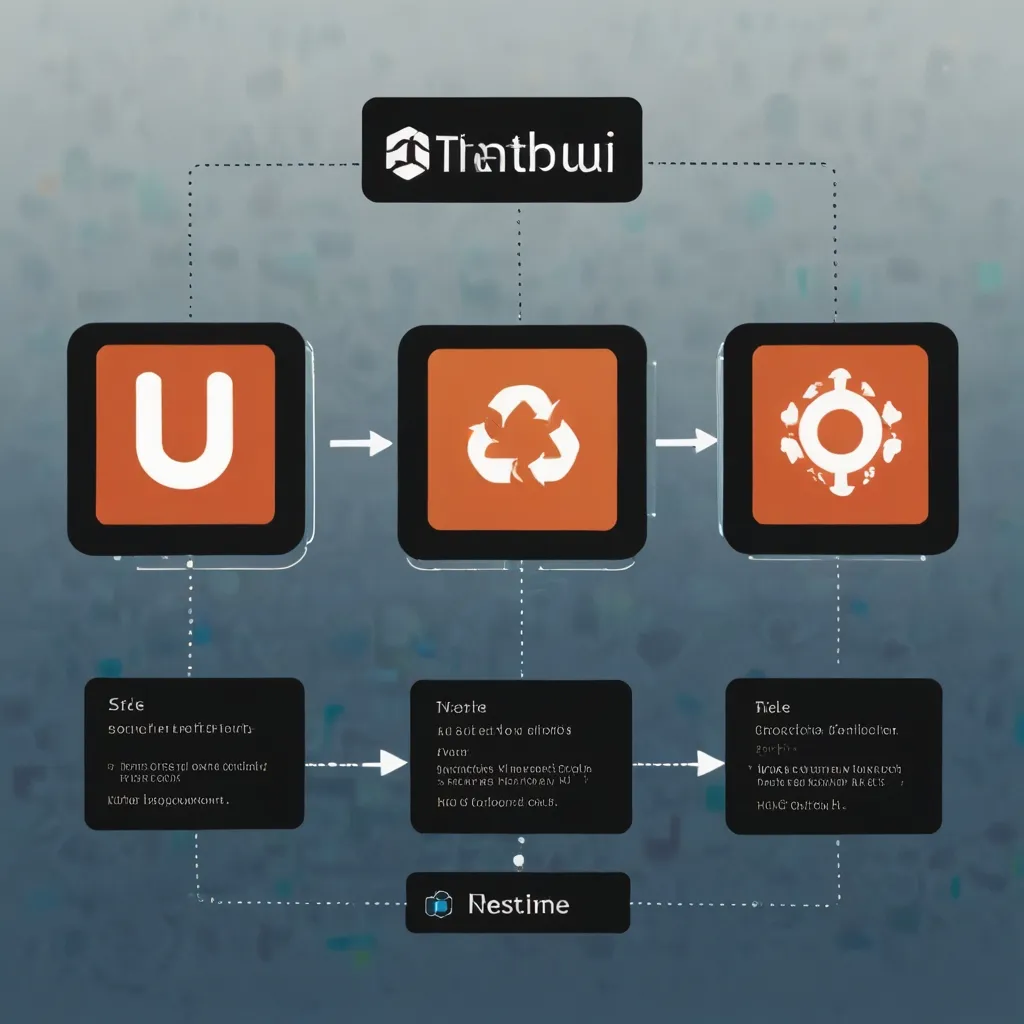WebAssembly’s Relaxed SIMD is a game-changer for web developers looking to squeeze every ounce of performance out of their applications. It’s all about harnessing the power of vector processing across different platforms, and I’m excited to share what I’ve learned about this technology.
At its core, Relaxed SIMD (Single Instruction, Multiple Data) allows us to perform the same operation on multiple data points simultaneously. This is particularly useful for tasks that involve crunching lots of numbers, like image processing or physics simulations. The “relaxed” part means it’s designed to work across different CPU architectures, so we don’t have to worry about writing separate code for each platform.
Let’s dive into how we can use this in our WebAssembly code. First, we need to make sure we’re using a compiler that supports Relaxed SIMD. Emscripten is a popular choice, and it’s been adding support for these features. Here’s a simple example of how we might use SIMD to add two vectors:
#include <wasm_simd128.h>
void add_vectors(float* a, float* b, float* result, int length) {
for (int i = 0; i < length; i += 4) {
v128_t va = wasm_v128_load(a + i);
v128_t vb = wasm_v128_load(b + i);
v128_t sum = wasm_f32x4_add(va, vb);
wasm_v128_store(result + i, sum);
}
}
In this code, we’re loading four floats at a time into SIMD vectors, adding them together, and then storing the result. This can be significantly faster than adding the numbers one at a time, especially for large datasets.
One of the cool things about Relaxed SIMD is that it can adapt to different hardware capabilities. If a particular SIMD operation isn’t available on the target hardware, the WebAssembly runtime can emulate it or fall back to a scalar implementation. This means we can write our code once and have it run efficiently on a wide range of devices.
But it’s not just about raw number crunching. Relaxed SIMD can be a powerful tool for graphics processing too. Imagine you’re building a web-based image editor. You could use SIMD instructions to apply filters or transformations to large images much more quickly than with traditional scalar code.
Here’s an example of how we might implement a simple brightness adjustment using SIMD:
#include <wasm_simd128.h>
void adjust_brightness(uint8_t* image, float factor, int pixels) {
v128_t vfactor = wasm_f32x4_splat(factor);
for (int i = 0; i < pixels; i += 16) {
v128_t pixel = wasm_v128_load(image + i);
v128_t r = wasm_i32x4_extract_lane(pixel, 0);
v128_t g = wasm_i32x4_extract_lane(pixel, 1);
v128_t b = wasm_i32x4_extract_lane(pixel, 2);
v128_t a = wasm_i32x4_extract_lane(pixel, 3);
r = wasm_f32x4_mul(wasm_f32x4_convert_i32x4(r), vfactor);
g = wasm_f32x4_mul(wasm_f32x4_convert_i32x4(g), vfactor);
b = wasm_f32x4_mul(wasm_f32x4_convert_i32x4(b), vfactor);
pixel = wasm_i32x4_make(wasm_i32x4_trunc_sat_f32x4(r),
wasm_i32x4_trunc_sat_f32x4(g),
wasm_i32x4_trunc_sat_f32x4(b),
a);
wasm_v128_store(image + i, pixel);
}
}
This code adjusts the brightness of an image by multiplying the RGB values by a factor. It processes 16 pixels at a time, which can lead to significant speedups for large images.
One thing to keep in mind when working with Relaxed SIMD is that not all browsers support it yet. It’s a good idea to include a fallback for browsers that don’t have SIMD capabilities. You can detect SIMD support like this:
WebAssembly.validate(new Uint8Array([
0x00, 0x61, 0x73, 0x6d, 0x01, 0x00, 0x00, 0x00,
0x01, 0x05, 0x01, 0x60, 0x00, 0x01, 0x7b, 0x03,
0x02, 0x01, 0x00, 0x07, 0x08, 0x01, 0x04, 0x74,
0x65, 0x73, 0x74, 0x00, 0x00, 0x0a, 0x09, 0x01,
0x07, 0x00, 0xfd, 0x0c, 0x00, 0x00, 0x00, 0x0b
])).then(supported => {
if (supported) {
console.log("SIMD is supported!");
} else {
console.log("SIMD is not supported.");
}
});
This code checks for SIMD support by attempting to validate a small WebAssembly module that uses SIMD instructions.
Now, you might be wondering how Relaxed SIMD compares to using GPU compute shaders for parallel processing. While GPUs can offer massive parallelism, they also come with their own set of challenges, like data transfer overhead and limited access to system memory. Relaxed SIMD, on the other hand, runs directly on the CPU and can seamlessly integrate with the rest of your application code. It’s particularly well-suited for tasks that require frequent interaction with the main application logic or don’t quite justify the overhead of GPU compute.
One area where I’ve found Relaxed SIMD to be particularly useful is in implementing machine learning inference on the web. Many ML models involve a lot of matrix multiplication and convolutions, which are perfect candidates for SIMD optimization. By using SIMD instructions, we can significantly speed up the inference process, making it feasible to run complex models directly in the browser.
Here’s a simplified example of how we might use SIMD to accelerate a matrix multiplication operation, which is a fundamental building block of many ML algorithms:
#include <wasm_simd128.h>
void matrix_multiply(float* a, float* b, float* c, int m, int n, int k) {
for (int i = 0; i < m; i++) {
for (int j = 0; j < n; j++) {
v128_t sum = wasm_f32x4_splat(0.0f);
for (int l = 0; l < k; l += 4) {
v128_t va = wasm_v128_load(a + i*k + l);
v128_t vb = wasm_v128_load(b + l*n + j);
sum = wasm_f32x4_add(sum, wasm_f32x4_mul(va, vb));
}
c[i*n + j] = wasm_f32x4_extract_lane(sum, 0) +
wasm_f32x4_extract_lane(sum, 1) +
wasm_f32x4_extract_lane(sum, 2) +
wasm_f32x4_extract_lane(sum, 3);
}
}
}
This implementation processes four elements at a time, which can lead to significant speedups for large matrices.
It’s worth noting that while Relaxed SIMD can offer impressive performance gains, it’s not a magic bullet. You’ll still need to think carefully about your algorithms and data structures to make the most of it. For example, ensuring that your data is properly aligned in memory can make a big difference in SIMD performance.
As we look to the future, I’m excited about the possibilities that Relaxed SIMD opens up for web development. We’re getting closer and closer to being able to build truly high-performance applications that run entirely in the browser. Imagine complex 3D modeling software, professional-grade video editors, or even scientific simulations running smoothly on any device with a modern web browser.
Of course, with great power comes great responsibility. As we push the boundaries of what’s possible in web applications, we need to be mindful of energy consumption and battery life, especially on mobile devices. Efficient use of SIMD can actually help in this regard, as it allows us to complete computations more quickly, potentially allowing the CPU to return to a low-power state sooner.
In conclusion, WebAssembly’s Relaxed SIMD is a powerful tool that’s bringing desktop-class performance to the web. Whether you’re building games, data visualization tools, or AI-powered applications, it’s definitely worth exploring how SIMD can help you push the boundaries of what’s possible in the browser. As with any advanced feature, it takes some time to master, but the performance gains can be well worth the effort. Happy coding!






